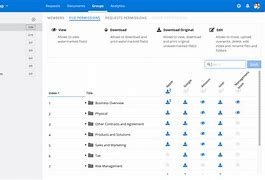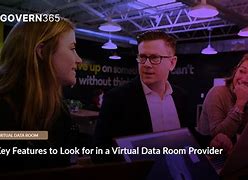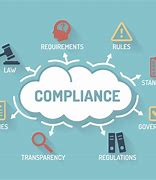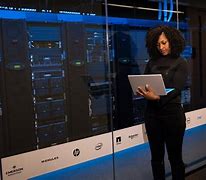
- The Ultimate FAQ for Understanding Virtual Data Rooms
- What is a Virtual Data Room?
- What is a virtual data room (VDR)?
- What are the benefits of using a VDR?
- How does a VDR work?
- What are the attributes of a VDR?
- Who uses VDRs?
- Virtual Data Rooms in M&A Transactions
- How are VDRs used in M&A transactions?
- What are the key benefits of using a VDR in M&A?
- How do VDRs improve due diligence?
- How do VDRs streamline the M&A process?
- How do VDRs enhance security in M&A?
- Choosing the Right VDR for your Needs
- What factors should you consider when choosing a VDR?
- What are the varied types of VDRs?
- How can you compare VDR offerrs?
- What are the key attributes to look for in a VDR?
- What are the pricing models for VDRs?
- Using a VDR Effectively
- How do you set up a VDR?
- How do you manage user access and permissions?
- How do you control document versions and track activity?
- How do you ensure data security in a VDR?
- How do you use VDRs for other purposes?
- Conclusion
- Summary of Key Takeaways
- Importance of VDRs in Modern Business
- Future Trends in VDR Technology

Okay, here’s your opening paragraph:
Are you ready to dive deep into the world of virtual data rooms? These secure, online platforms are revolutionizing the way businesses share confidential information for a range of critical tasks, from due diligence and mergers & acquisitions to legal investigations and financial reporting. But with so much buzz surrounding virtual data rooms (VDRs) , it’s only natural to have questions. What are they? How do they work? What are the benefits? And how do you choose the right VDR for your specific needs? This comprehensive FAQ guide is your ultimate resource to uncover all you need to know about VDRs, giving you the clarity and confidence to confidently leverage their powerful potential. Get ready to explore the world of VDRs and unlock new possibilities for collaboration, security, and efficiency!
The Ultimate FAQ for Understanding Virtual Data Rooms
Virtual data rooms (VDRs) have become an indispensable tool for businesses across various industries, especially in the context of mergers and acquisitions (M&A) transactions. This thorough guide addresses the most frequently asked querys about VDRs, offering valuable insights for anyone seeking to understand their functionalities, benefits, and applications.
What is a Virtual Data Room?
A virtual data room (VDR) is a secure, cloud-based platform designed for storing, sharing, and managing sensitive information. It offers a centralized repository for confidential documents, enabling controlled access and collaboration among authorized users.
What is a virtual data room (VDR)?
A VDR is essentially a digital vault for sensitive information. It allows you to share documents securely with external parties, such as investors, potential buyers, or due diligence teams, while maintaining complete control over access and data security.
What are the benefits of using a VDR?
VDRs offer a multitude of benefits, including:
- Enhanced Security: VDRs offer robust security attributes, such as encryption, multi-factor authentication, and audit trails, safeguarding sensitive information from unauthorized access.
- Streamlined Collaboration: VDRs facilitate seamless collaboration by enabling authorized users to access and share documents securely, regardless of their location.
- Improved Efficiency: VDRs automate many manual processes, such as document distribution, version control, and tracking activity, leading to boostd efficiency and reduced time-to-closure.
- Cost Savings: VDRs eliminate the need for physical data rooms, reducing storage costs and travel expenses.
- Enhanced Due Diligence: VDRs enable efficient and thorough due diligence by providing a centralized repository for all pertinent documents and facilitating organized review processes.
How does a VDR work?
A VDR typically operates as follows:
1. Data Upload: Documents are uploaded to the VDR platform and stored securely in a central repository.
2. User Access: Authorized users are granted access to the VDR platform, with permissions tailored to their functions and responsibilities.
3. Document Sharing: Users can access and share specific documents within the VDR, ensuring that information is disseminated only to authorized parties.
4. Activity Tracking: All activities within the VDR, such as document downloads, views, and edits, are meticulously tracked and recorded, providing a detailed audit trail.
5. Secure Communication: VDRs offer secure communication channels, allowing authorized users to exchange messages and collaborate on document reviews.
What are the attributes of a VDR?
Modern VDRs offer a wide scope of attributes designed to enhance security, collaboration, and efficiency, including:
- Access Control: Granular user permissions allow administrators to restrict access to specific documents or sections of the VDR, ensuring that only authorized users can view or modify data.
- Version Control: VDRs automatically track document versions, preventing confusion and ensuring that all users are working with the latest updates.
- Watermarking: Documents can be watermarked with user information, preventing unauthorized distribution and ensuring that the origin of any document can be traced.
- Document Management: VDRs offer advanced document management attributes, such as search functionality, indexing, and folder organization, enabling users to quickly locate and retrieve pertinent information.
- Audit Trail: VDRs maintain detailed logs of all activities, providing a thorough audit trail for compliance purposes.
- Security Certifications: Leading VDR offerrs often hold industry-recognized security certifications, such as ISO 27001, ensuring that their platforms meet the highest security standards.
Who uses VDRs?
VDRs are widely used by various entities, including:
- Mergers and Acquisitions (M&A): VDRs are essential for facilitating due diligence during M&A transactions, enabling efficient document sharing and collaboration between parties.
- Private Equity: Private equity firms leverage VDRs to manage sensitive information, streamline due diligence processes, and communicate effectively with portfolio companies.
- Real Estate: VDRs are used in real estate transactions to securely share property information, financial documents, and legal agreements with potential investors or buyers.
- Intellectual Property: VDRs offer a safe and secure environment for sharing intellectual property information, such as patents, trademarks, and trade secrets, during licensing negotiations or technology transfers.
- Litigation: VDRs can be used to securely share evidence and documents during litigation proceedings, simplifying information sharing and communication between parties and legal teams.
Virtual Data Rooms in M&A Transactions
VDRs play a pivotal function in M&A transactions, streamlining processes, enhancing security, and ultimately contributing to faster and more achievementful deals.
How are VDRs used in M&A transactions?
VDRs are extensively used throughout the M&A lifecycle, including:
- Pre-Deal Due Diligence: VDRs enable potential acquirers to conduct thorough due diligence by providing access to a centralized repository of target company information, including financial statements, contracts, and operational data.
- Negotiation and Deal Structuring: VDRs facilitate secure communication and document sharing between parties during negotiation stages, enabling efficient deal structuring and agreement on key terms.
- Post-Acquisition Integration: VDRs can be used to share post-acquisition information, such as integration plans, employee handbooks, and legal documents, with the acquired company’s team.
What are the key benefits of using a VDR in M&A?
VDRs offer several benefits in M&A transactions:
- Accelerated Deal Closure: VDRs expedite due diligence processes, enabling faster deal negotiations and closing times.
- Improved Transparency: VDRs offer a transparent and auditable platform, fostering trust and confidence among all parties involved in the transaction.
- Reduced Risk: VDRs enhance security and compliance, mitigating risks associated with data leaks or unauthorized access.
- Enhanced Communication: VDRs offer secure communication channels, facilitating collaboration and information sharing between parties.
- Cost Savings: VDRs eliminate the need for physical data rooms, reducing travel expenses and storage costs.
How do VDRs improve due diligence?
VDRs significantly improve due diligence processes in M&A by:
- Centralized Information: VDRs offer a centralized repository for all pertinent documents, allowing due diligence teams to easily access and review information.
- Streamlined Collaboration: VDRs enable efficient collaboration among due diligence teams, facilitating seamless information sharing and discussions.
- Version Control: VDRs automatically track document versions, ensuring that all parties are working with the latest information and eliminating confusion.
- Activity Tracking: VDRs maintain detailed logs of all activity, providing a transparent audit trail for compliance and reporting purposes.
How do VDRs streamline the M&A process?
VDRs streamline the M&A process by:
- Automated Processes: VDRs automate many manual tasks, such as document distribution, version control, and activity tracking, complimentarying up time for more strategic activities.
- Reduced Paperwork: VDRs eliminate the need for physical documents, reducing the volume of paperwork and streamlining communication processes.
- Improved Efficiency: VDRs facilitate faster decision-making by providing timely access to pertinent information and enabling efficient collaboration between parties.
- Enhanced Communication: VDRs offer secure communication channels, improving communication and collaboration between parties throughout the transaction.
How do VDRs enhance security in M&A?
VDRs enhance security in M&A transactions by:
- Data Encryption: VDRs encrypt all data at rest and in transit, protecting sensitive information from unauthorized access.
- Access Control: VDRs offer granular access control, enabling administrators to restrict access to specific documents or sections of the VDR, based on user functions and responsibilities.
- Audit Trails: VDRs maintain detailed logs of all activity, providing a transparent audit trail that can be used to track access patterns and determine potential security breaches.
- Multi-Factor Authentication: VDRs often require multi-factor authentication, adding an extra layer of security to prevent unauthorized access to the platform.
Choosing the Right VDR for your Needs
selecting the right VDR is crucial for ensuring a secure, efficient, and achievementful transaction. Several factors need to be considered when choosing a VDR offerr.
What factors should you consider when choosing a VDR?
When selecting a VDR offerr, consider the following factors:
- Security attributes: Evaluate the offerr’s security attributes, such as encryption, access control, audit trails, and compliance certifications.
- functionality and attributes: Consider the offerr’s attributes, including document management, version control, communication tools, and user interface.
- Pricing Model: Compare pricing models, including per-user, per-GB, or flat-rate pricing options, to determine the most cost-effective solution.
- Customer Support: Ensure that the offerr offers responsive and reliable customer support.
- Industry Experience: Consider the offerr’s experience in serving clients in your industry and their understanding of your specific requirements.
What are the varied types of VDRs?
VDRs can be categorized into varied types based on their functionality and target audience:
- General Purpose VDRs: These platforms cater to a wide scope of industries and use cases, offering a thorough suite of attributes for managing sensitive information.
- Industry-Specific VDRs: These platforms are tailored to the specific needs of particular industries, such as healthcare, finance, or legal, offering specialized attributes and compliance capabilities.
- M&A-Specific VDRs: These platforms are specifically designed for mergers and acquisitions transactions, offering attributes that streamline due diligence, negotiation, and deal closure.
How can you compare VDR offerrs?
To compare varied VDR offerrs, consider the following steps:
- Request Demos: Schedule demos with shortlisted offerrs to get a firsthand experience of their platforms and attributes.
- Read Reviews: Explore online reviews and testimonials from other users to gain insights into the offerr’s strengths and weaknesses.
- Compare Pricing: Obtain detailed pricing information from each offerr to compare costs and determine the most cost-effective solution.
- Evaluate Security attributes: Analyze the offerr’s security attributes, including encryption, access control, audit trails, and compliance certifications.
- Consider Customer Support: Assess the offerr’s customer support channels, response times, and overall responsiveness.
What are the key attributes to look for in a VDR?
When evaluating VDR offerrs, prioritize the following key attributes:
- Robust Security: Look for platforms with strong encryption, multi-factor authentication, and granular access control.
- User-Friendly Interface: select a platform with an intuitive interface that is easy to navigate and use, even for users unfamiliar with VDRs.
- Advanced Document Management: Ensure that the platform offers robust document management attributes, including search functionality, indexing, and folder organization.
- Version Control and Audit Trails: Look for platforms that automatically track document versions and maintain detailed logs of all activity.
- Collaboration Tools: select a platform that offers secure communication channels and collaboration tools, enabling efficient information sharing and discussion among parties.
- Integration Capabilities: Consider platforms that integrate with other business systems, such as CRM, ERP, or legal databases, streamlining data management and workflow.
- Compliance Certifications: Look for platforms that hold industry-recognized security certifications, such as ISO 27001, demonstrating compliance with industry optimal practices.
What are the pricing models for VDRs?
VDR offerrs offer various pricing models, including:
- Per-User Pricing: This model charges a fixed fee per user, regardless of the amount of data stored or the number of documents accessed.
- Per-GB Pricing: This model charges a fee based on the amount of data stored in the VDR platform.
- Flat-Rate Pricing: This model offers a fixed monthly or annual fee for unlimited data storage and user access.
Using a VDR Effectively
To maximize the benefits of a VDR, it’s essential to implement optimal practices for setup, user management, and security.
How do you set up a VDR?
Setting up a VDR involves the following steps:
1. select a offerr: select a reputable VDR offerr based on your specific needs and requirements.
2. Configure User Accounts: Create user accounts with appropriate permissions based on user functions and responsibilities.
3. Upload Documents: Organize and upload pertinent documents to the VDR platform, ensuring that all necessary information is readily available.
4. Set Access Control: Configure access control settings, defining which users can access specific documents or sections of the VDR.
5. Establish Communication Channels: Establish secure communication channels within the VDR platform, enabling authorized users to collaborate and exchange information effectively.
How do you manage user access and permissions?
Effectively managing user access and permissions is crucial for ensuring data security and preventing unauthorized access. Consider the following optimal practices:
- Least Privilege Principle: Grant users only the minimum permissions they need to perform their assigned tasks.
- function-Based Access Control: Implement function-based access control to assign varied levels of access based on user functions and responsibilities.
- Regular Review of Permissions: Regularly review and update user permissions to ensure that they remain consistent with current functions and responsibilities.
- Two-Factor Authentication: Implement two-factor authentication to enhance security and prevent unauthorized access to the VDR platform.
How do you control document versions and track activity?
Maintaining control over document versions and tracking activity within the VDR is essential for ensuring data integrity and compliance. Consider the following optimal practices:
- Version Control: Enable automatic document versioning to track all changes made to documents and prevent confusion.
- Document History: Maintain a complete history of document versions, allowing users to revert to previous versions if necessary.
- Activity Tracking: Monitor user activity within the VDR platform, including document downloads, views, and edits, to maintain a thorough audit trail.
- Reporting attributes: Utilize reporting attributes to generate reports on user activity, document access patterns, and overall platform application.
How do you ensure data security in a VDR?
Maintaining data security in a VDR is paramount for protecting sensitive information from unauthorized access or breaches. Consider the following optimal practices:
- Encryption: Ensure that all data stored and transmitted within the VDR platform is encrypted, using industry-standard encryption algorithms.
- Access Control: Implement robust access control measures, such as user authentication, function-based permissions, and multi-factor authentication.
- Audit Trails: Maintain detailed audit trails of all user activity, providing a transparent record of access patterns and potential security breaches.
- Regular Security Reviews: Conduct regular security reviews to determine and mitigate potential vulnerabilities in the VDR platform.
- Compliance Certifications: select a VDR offerr that holds industry-recognized security certifications, such as ISO 27001, demonstrating compliance with industry optimal practices.
How do you use VDRs for other purposes?
While VDRs are primarily used in M&A transactions, their functionalities can be leveraged for various other purposes, such as:
- Investor Relations: VDRs can be used to share confidential information with investors, such as financial statements, company reports, and presentations.
- Legal and Regulatory Compliance: VDRs can facilitate secure document sharing and collaboration with legal teams, regulatory bodies, and auditors.
- Project Management: VDRs can offer a secure platform for sharing project documents, tracking progress, and managing communication among team members.
- HR Onboarding: VDRs can be used to securely share onboarding information, such as employee handbooks, company policies, and benefits information, with new hires.
Conclusion
Virtual data rooms have become indispensable tools for businesses seeking to streamline processes, enhance security, and facilitate collaboration. Understanding the functionalities, benefits, and applications of VDRs is essential for navigating the increasingly complex landscape of modern business transactions. By implementing optimal practices for choosing, setting up, and using VDRs, businesses can ensure that sensitive information is managed securely and efficiently, contributing to achievementful outcomes.
Summary of Key Takeaways
- VDRs offer a secure and efficient platform for managing sensitive information, facilitating collaboration, and streamlining processes.
- VDRs offer robust security attributes, such as encryption, access control, and audit trails, protecting data from unauthorized access.
- VDRs are widely used in M&A transactions, enhancing due diligence, streamlining negotiations, and accelerating deal closure.
- When choosing a VDR offerr, consider factors such as security attributes, functionality, pricing, customer support, and industry experience.
- optimal practices for using VDRs include setting up user accounts with appropriate permissions, implementing robust access control measures, and maintaining detailed audit trails.
- VDRs can be used for a variety of purposes beyond M&A, including investor relations, legal compliance, project management, and HR onboarding.
Importance of VDRs in Modern Business
VDRs are becoming increasingly essential in modern business, as businesses increasingly rely on digital platforms to manage sensitive information and facilitate collaboration. The growing importance of VDRs can be attributed to several factors:
- boostd Data Volume and Complexity: Businesses are generating and managing more data than ever before, making it challenging to secure and manage information effectively.
- Remote Work and Collaboration: The rise of remote work and global collaboration has created new challenges for securely sharing sensitive information across geographically dispersed teams.
- Regulatory Compliance: Businesses are facing increasing regulatory pressure to protect sensitive data, requiring robust security measures and transparent audit trails.
- Cybersecurity Threats: The growing threat of cyberattacks has heightened the need for robust security measures to protect sensitive information from unauthorized access or breaches.
Future Trends in VDR Technology
VDR technology is continuously evolving, with several emerging trends shaping the future of VDRs:
- Artificial Intelligence (AI): AI-powered attributes, such as automated document examination, data extraction, and predictive analytics, are expected to further streamline VDR processes.
- Integration with Other Platforms: VDRs are expected to integrate more seamlessly with other business platforms, such as CRM, ERP, and legal databases, enhancing workflow and data management.
- Enhanced Security: VDR offerrs are continuously developing new security attributes, including advanced encryption algorithms, multi-factor authentication, and blockchain technology, to protect data from emerging cyber threats.
- Mobile Access: VDRs are becoming more accessible on mobile devices, enabling users to access and manage sensitive information from anywhere, anytime.
- Personalized User Experiences: VDR platforms are expected to offer more personalized user experiences, tailored to the specific needs and preferences of individual users.
In conclusion, virtual data rooms have become an indispensable tool for modern businesses, enabling them to manage sensitive information securely, streamline processes, and facilitate collaboration. The future of VDRs is bright, with emerging technologies poised to further enhance their functionality and security, driving innovation and efficiency in the digital age.




















